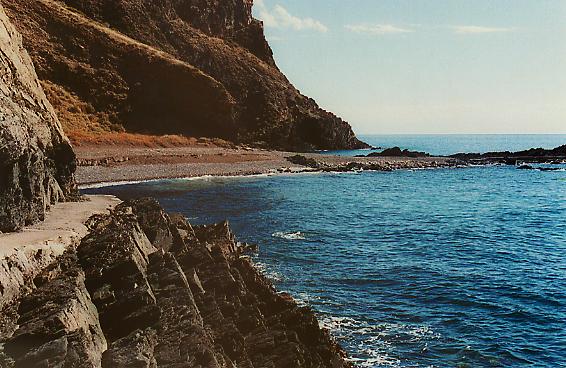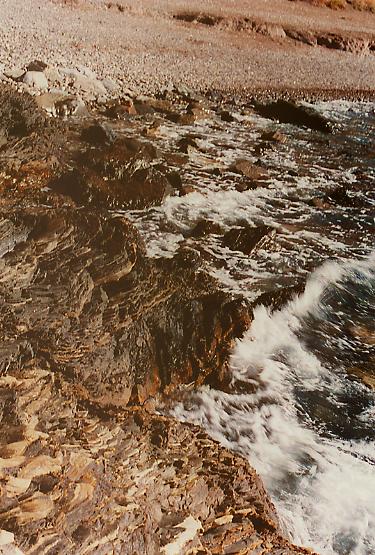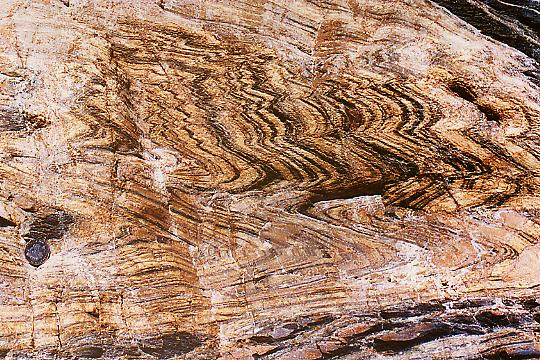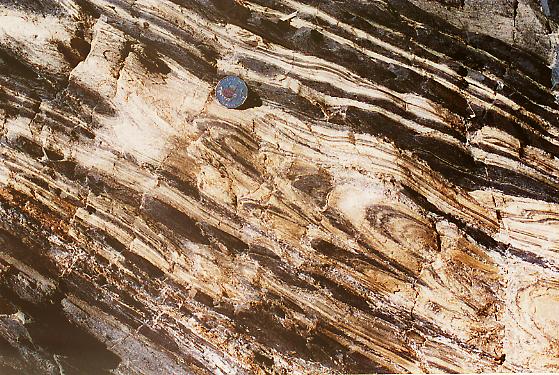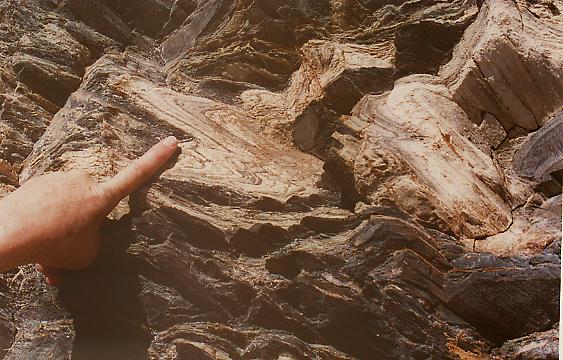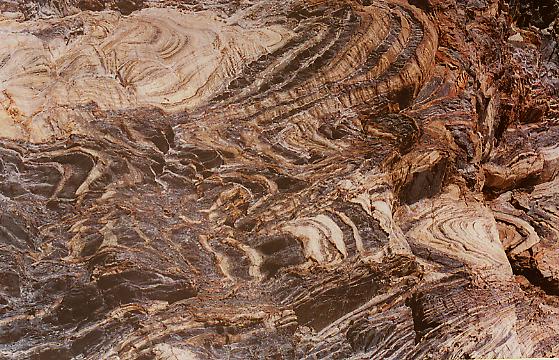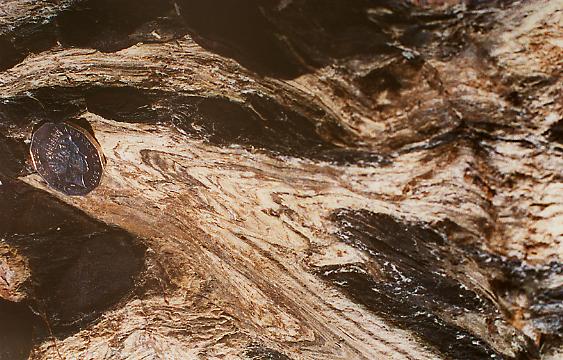Interesting Geology at Second Valley, South AustraliaVery often we are told that most rock-forming geologic processes and layers are the results of extremely slow processes. But there are a few places on earth where the evidence is very much to the contrary. One of these places is Second Valley, in South Australia. The small pathway in the picture below goes from the parking lot around the corner of the cliff to the small gravel beach seen in the background. The pathway has been cut into a cliff composed layers of white and buff-coloured dolomitic limestone, gray to black slate, and quartz veins. Before you round the bend shown here, the layers are simply there and kind of pretty with their different colours. However, when you round the bend there is a most amazing site as you look at the cliff face itself. This is shown in the photographs below this one. These photographs were taken by Barry Setterfield in 2001.
As you round the turn and look down, the pebble beach is ahead of you, and the finely layered rocks are cut away by the surf below.
It looks a bit like someone had dripped color into a paint bucket and just started to swirl it.
Some of the swirls are quite tightly curled around each other, with no discernable breaks in the rock itself.
In the picture below, the intricacy of the swirls can be seen. the vertical break on the right is where one rounds the corner, only to see another full section of cliff face with the same swirled rocks.
The cliff face showing these swirls of rock whirled together like a giant fingerpainting is well over twenty feet high. Normal, mainstream geology tells us that the layers we see were deposited slowly through time. Then the tilting and curving of the strata took place amidst earth movements which caused fracture zones in the rocks themselves. These swirls in these rocks have cracks at odd places in the rock, often running perpendicular to the grain of the swirls at that point. In other words, the cracks have formed quite apart from the swirls, which are blended together as a whole. How is this type of formation possible in the long ages scenario? It looks like what is seen here all formed at once, while all the materials involved were still plastic, and then hardened together at the same time. The slate is not cracking at the bends. Nothing is cracking at the bends. We do seem to have evidence here that at least some of the formations which might normally be considered the product of thousands or millions of years of geologic processes might actually have been formed massively and swiftly. |
